Home to Cornell University, Ithaca is a fun and quirky college town with its own sense of identity. We booked three nights in Ithaca because it is close to Taughannock Falls, Buttermilk Falls, and Robert Treman State Parks, which were on our itinerary.
Travel brochures and T-shirts around town proudly proclaim, “Ithaca is Gorges.” It’s true. Melting glaciers from the Ice Age cut deep gorges, producing over 150 waterfalls in the area. Add 30,000 residents and another 25,000 college students from Cornell and Ithaca College, and you’ve got a multicultural town filled with restaurants and cutting-edge technology.
Ithaca is one of those places I wish I had more time to explore. It sits on the southern end of Cayuga Lake, the longest of the Finger Lakes. We did manage to drive around Cornell, visit the Cornell Botanic Garden, and hike (one-way) the Cascadilla Gorge. Read on to see how we found Ithaca “gorgeous.”
Cornell University
After arriving on campus, we saw Triphammer Falls from one of the bridges crossing over Fall Creek Gorge. We parked at the Martin Y Tang Welcome Center and walked up to the 50-foot falls for a better view. Above the waterfalls sits Beebe Lake with a one-mile walking loop.
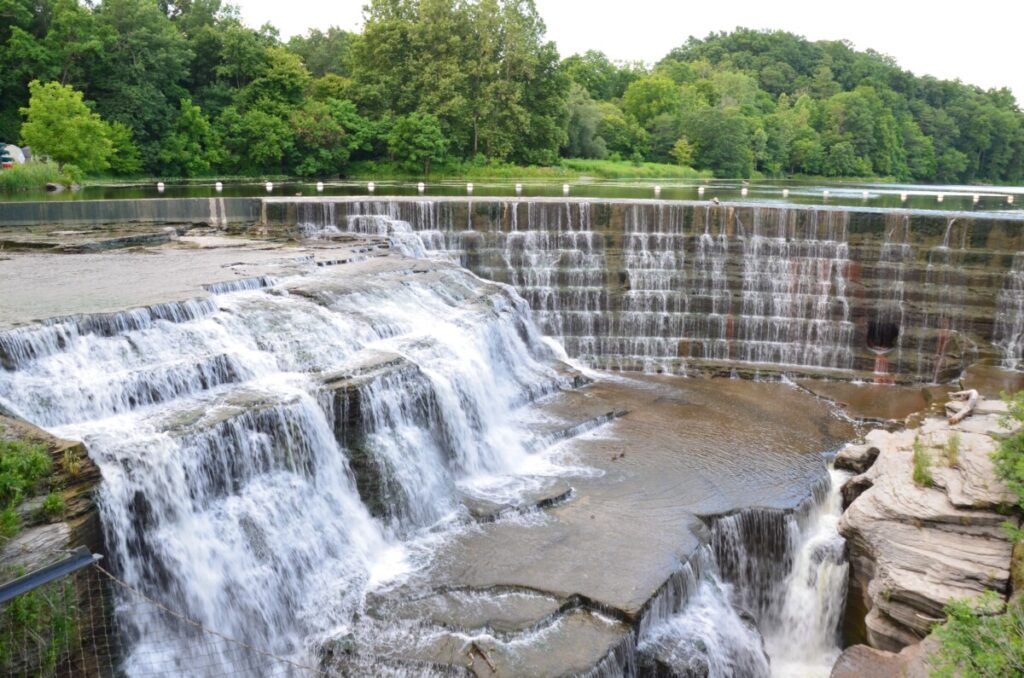
Jeremiah Beebe (1791-1861) owned mills along Falls Creek and hired a young engineer, Ezra Cornell. Seeing the need for hydropower, Cornell built the dam in 1838 that created Lake Beebe. Cornell farmed for many years before forming a partnership with Samual Morse; first, to dig telegraph lines (using a plow Cornell invented) and later, to hang overhead telegraph lines when that proved a more reliable method. Cornell continued to invest in the telegraph industry and became the largest shareholder of Western Union. The rest is history. Cornell became wealthy, entered New York politics, and co-founded Cornell University in 1865 with a $500,000 endowment.
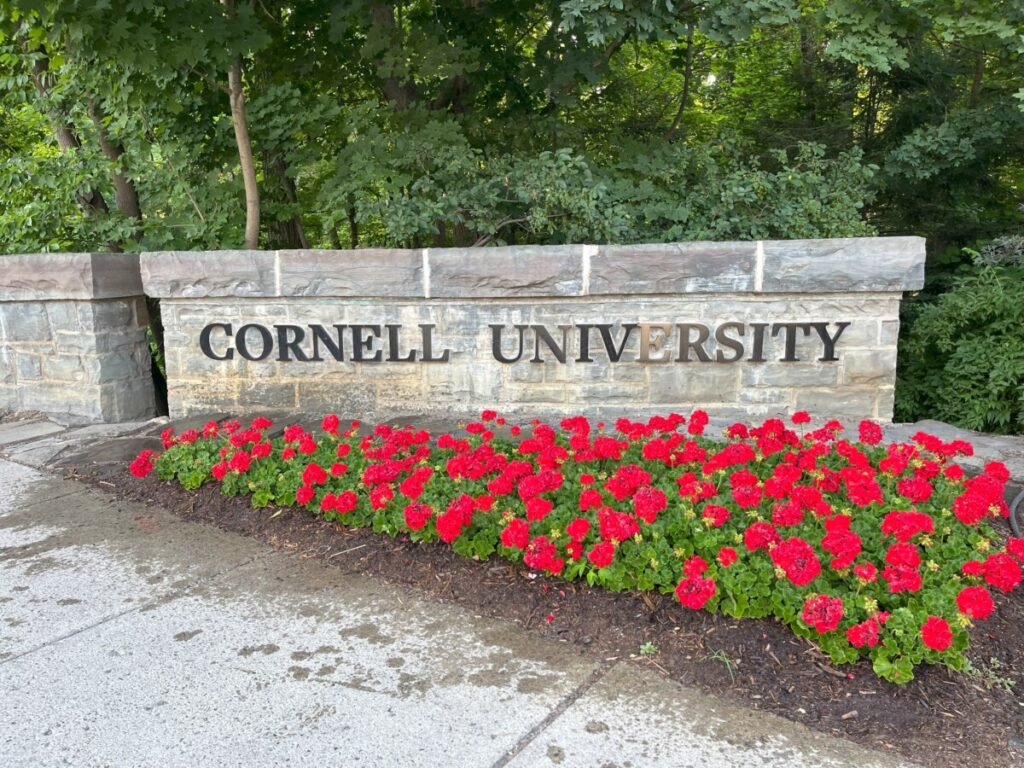
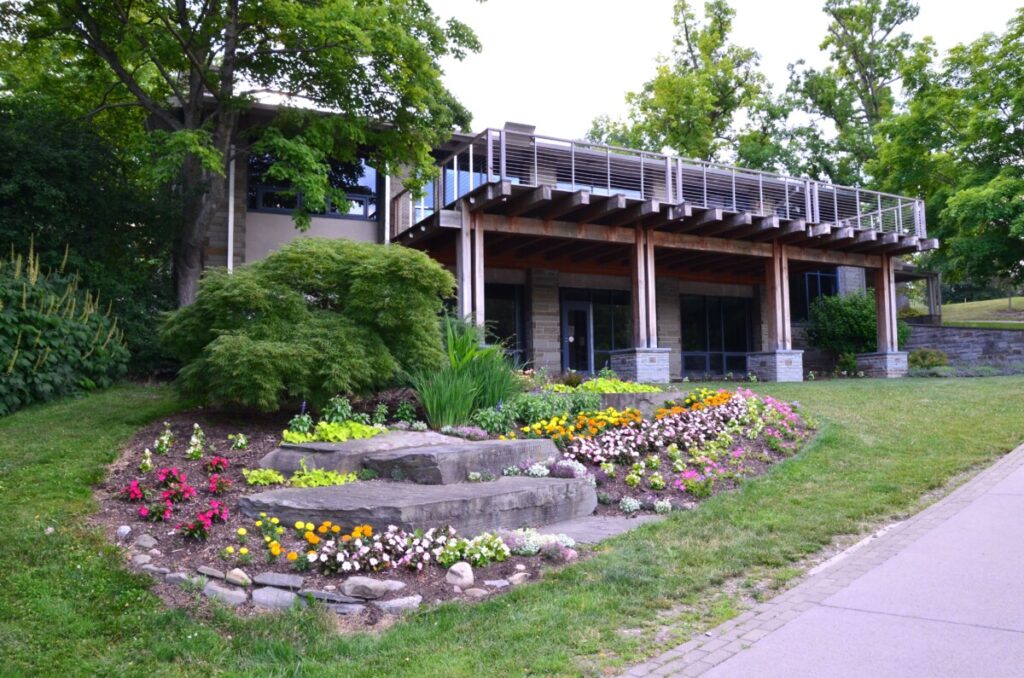
The first class began in the fall of 1868 and opened to women students just a few years later in 1871. During the first 35 years, the college created the Architecture College, Law School, Agriculture College (including the first Entomology department in the US), Veterinary College, and Medical School (in NYC).
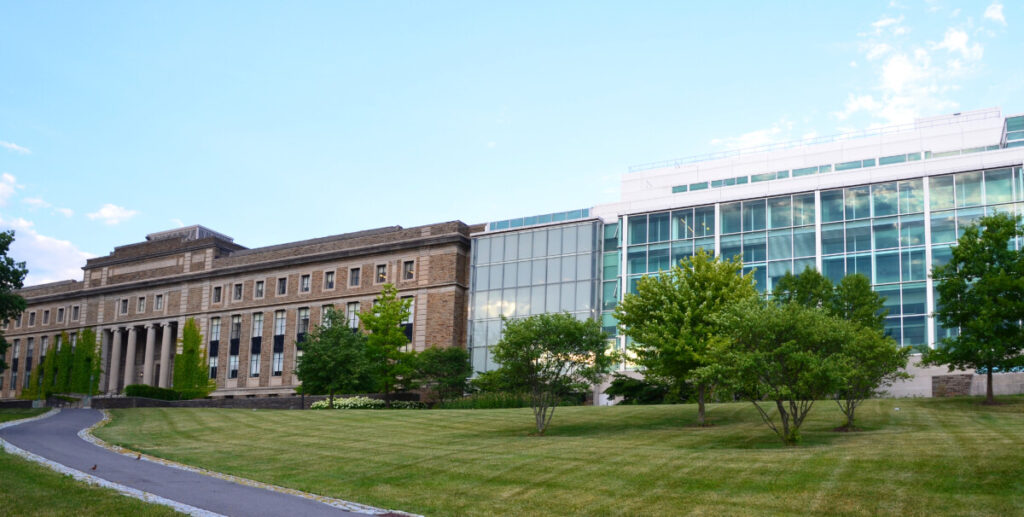
Today, the Ivy League university’s main campus sits on 745 acres with over 250 buildings. Most know Cornell due to its top-ranked Hotel School. Founded in 1922 as the first hospitality management program in the country, the program blends classroom education with on-the-job training. The Statler Hotel opened in 1948 and provides students with real-world experience with 153 hotel rooms, three restaurants, and a large banquet/meeting space facility.
Cornell Botanic Gardens
We saw a sign for Cornell Botanic Gardens and decided to take a quick look since it didn’t close until dusk. The area is expansive at 500 acres of gardens and free of charge. I wish we had more time to explore, but the sun was setting.

From the parking lot, we approached the “Double Allium” garden sculpture and the Nevin Welcome Center. Maps displayed walking trails to Beebe Lake, Ag Quad, and other campus spots. Founded in 1944, the garden features an herb garden, flower garden, groundcover collection, winter garden, rock garden, hillside garden, vegetable garden, conifer slope, and more. There was no way we could see everything in just a few minutes.
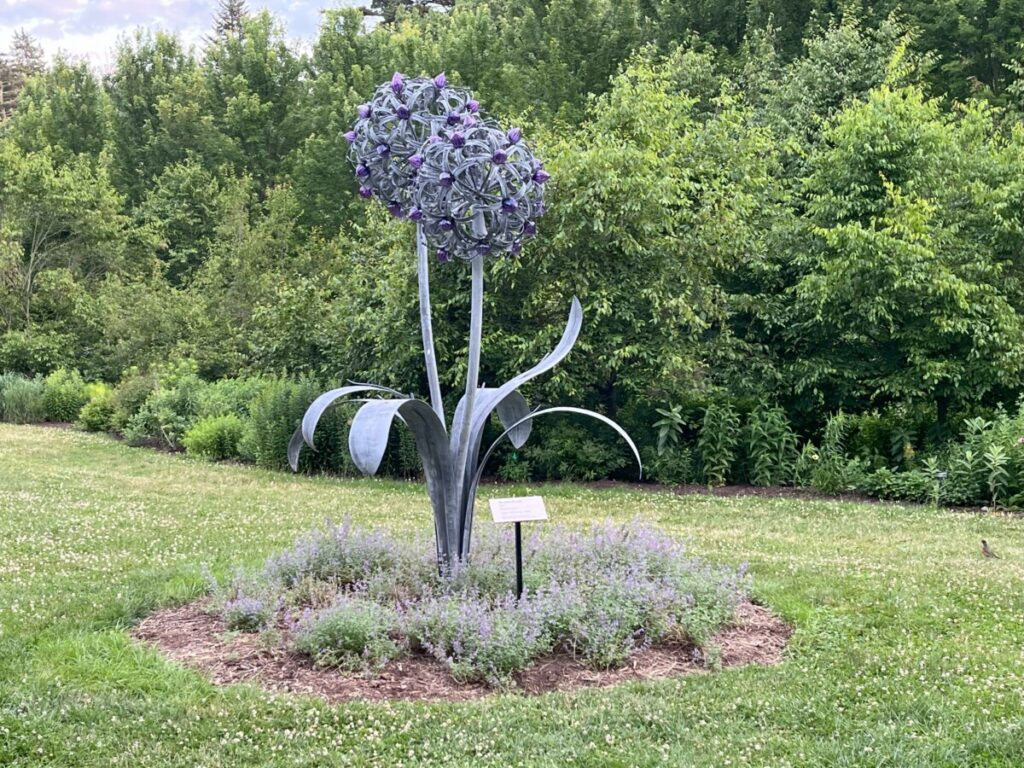
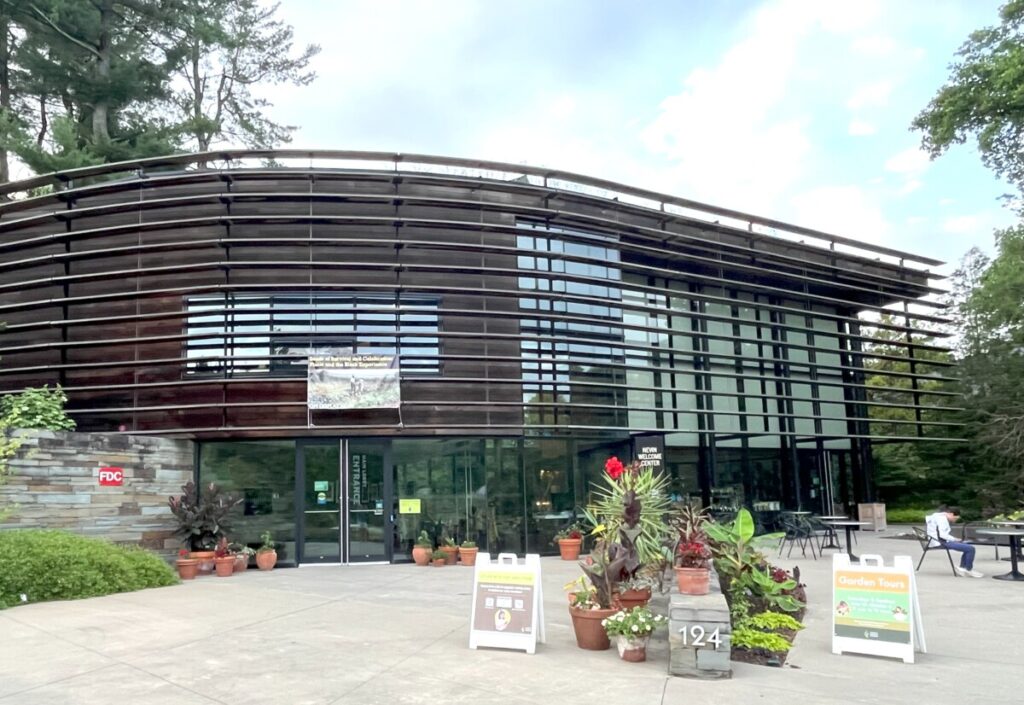
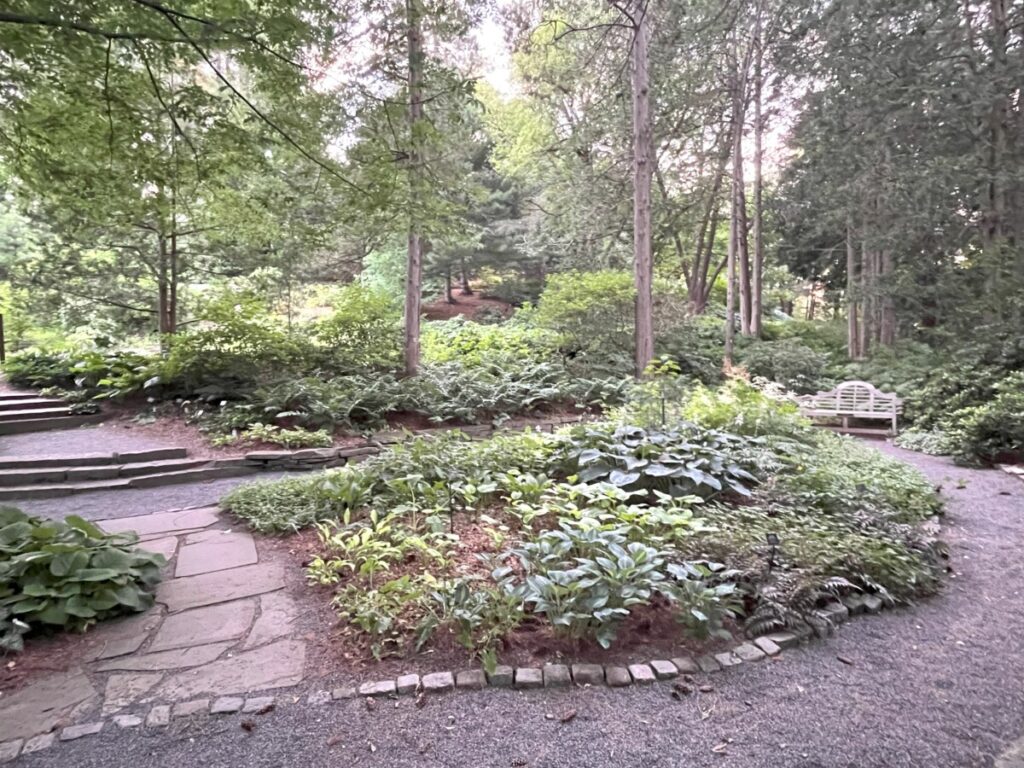
Trails behind the Nevin Center led to Comstock Knoll, filled with an extensive rhododendron collection, and the Guy Nearing Summer House. Another garden we explored was the Robison Herb Garden with over 100 herbs and 17 theme beds. It surrounds Lewis House which initially served as home to the Forest School.
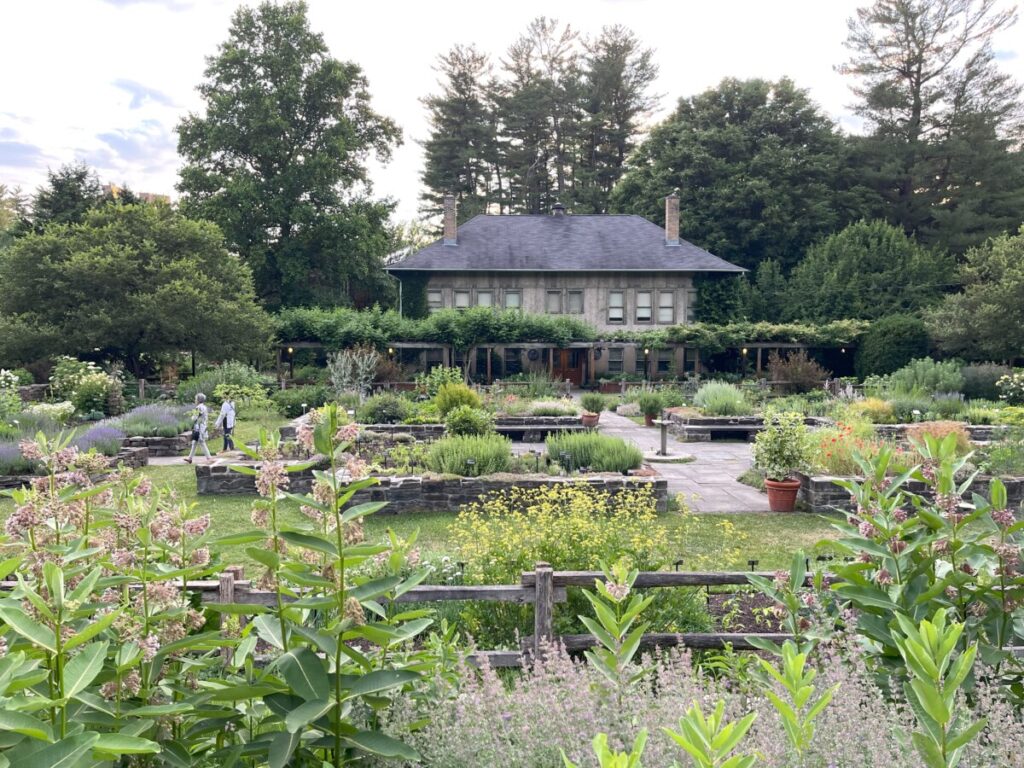
Visitors can walk through the Mundy Wildflower Garden to the FR Newman Arboretum. We didn’t have time to see this, but the 100-acre space consists of over 1,000 different tree species along with a sculpture garden, shrub garden, and hiking trails.
Cascadilla Gorge
The Cornell Botanic Garden manages acres of on-campus natural areas, including Fall Creek Valley, Lake Beebe, and Cascadilla Gorge. The gorge runs in the middle of town from Cornell’s North Campus to downtown.
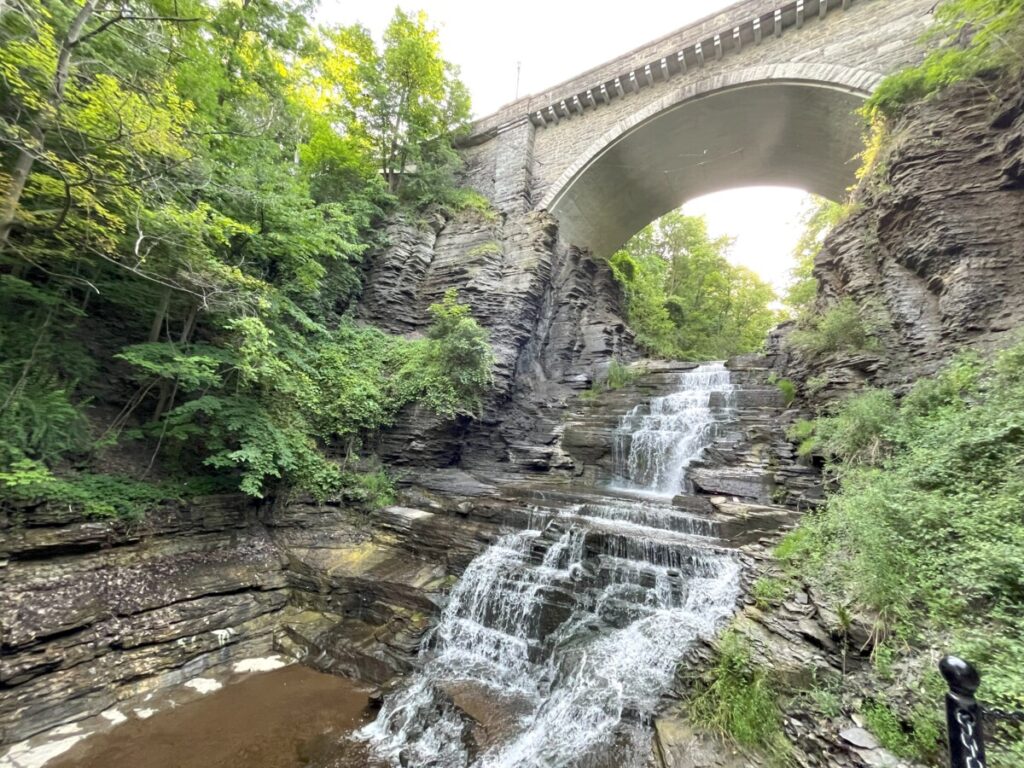
The trail is just a 1.3-mile hike but ascends 400 feet. Due to time constraints, Dear Hubby (DH) dropped me off at the top of the trail near Cornell’s Schwartz Performing Arts Center so I could hike it one way (and downhill). Walking down the stairs into the gorge, I was immediately transported away from the city with steep rock walls surrounding me. The stone trail, constructed by CCC in the 1930s and restored in 2016, took me past nine waterfalls.
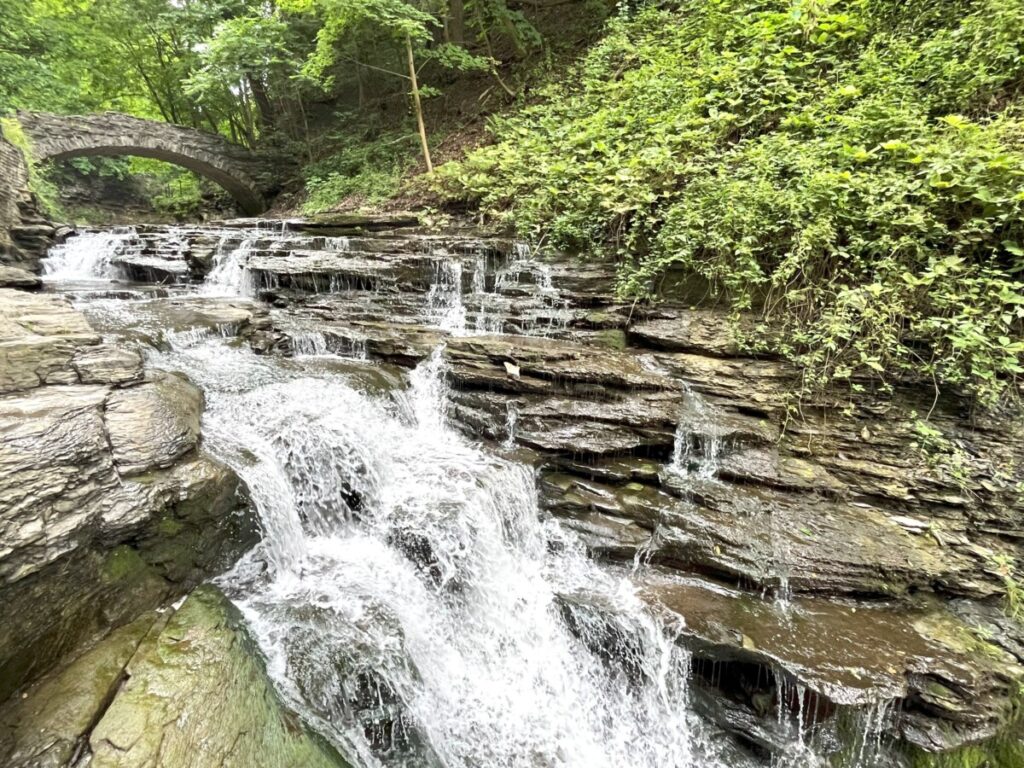
You have to hike Cascadilla Gorge to experience it. At the bottom, I met DH at Gimme! Coffee on Cayuga Street for breakfast before heading through the Catskill Mountains to the Hudson River Valley.
In Conclusion
Don’t skip a trip to Ithaca when visiting the Finger Lakes region. Surprisingly, the college town boasts scenic beauty, waterfalls, and secluded spots. For more information about Cornell Botanic Garden (worthy of at least a half-day visit), click here. From the tab selections on the left, you can click the On-Campus Natural Areas tab to see information about Cacadilla Gorge. You can also download self-guided tours of the gardens, trails, Cascadilla Gorge, and many other areas here.
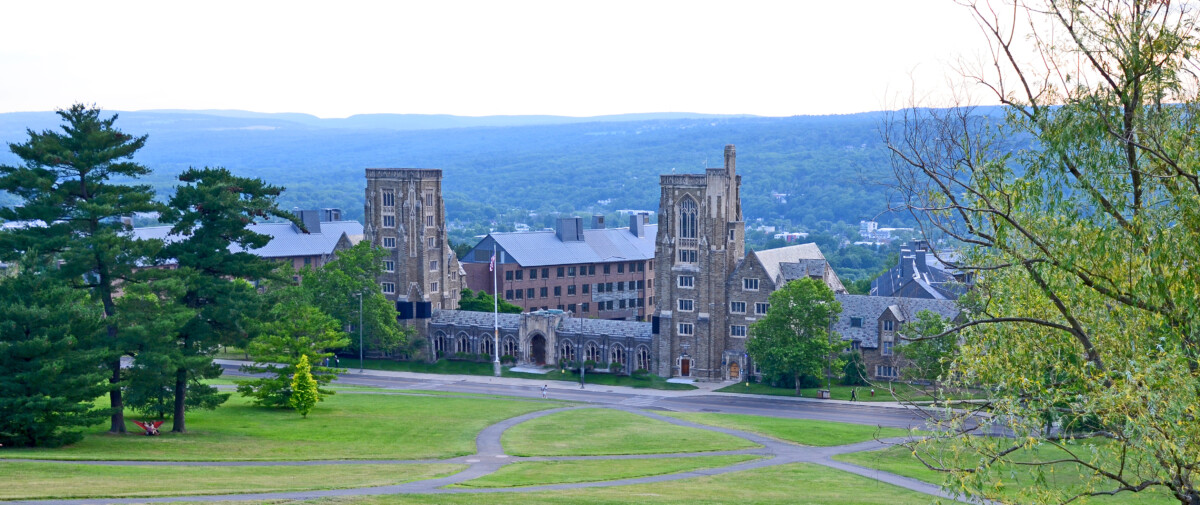
Pingback: Niagara Falls and Finger Lakes of New York Itinerary • Finding Family Adventures